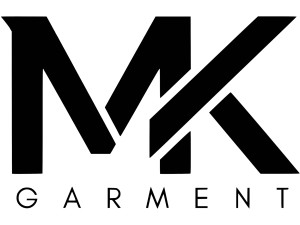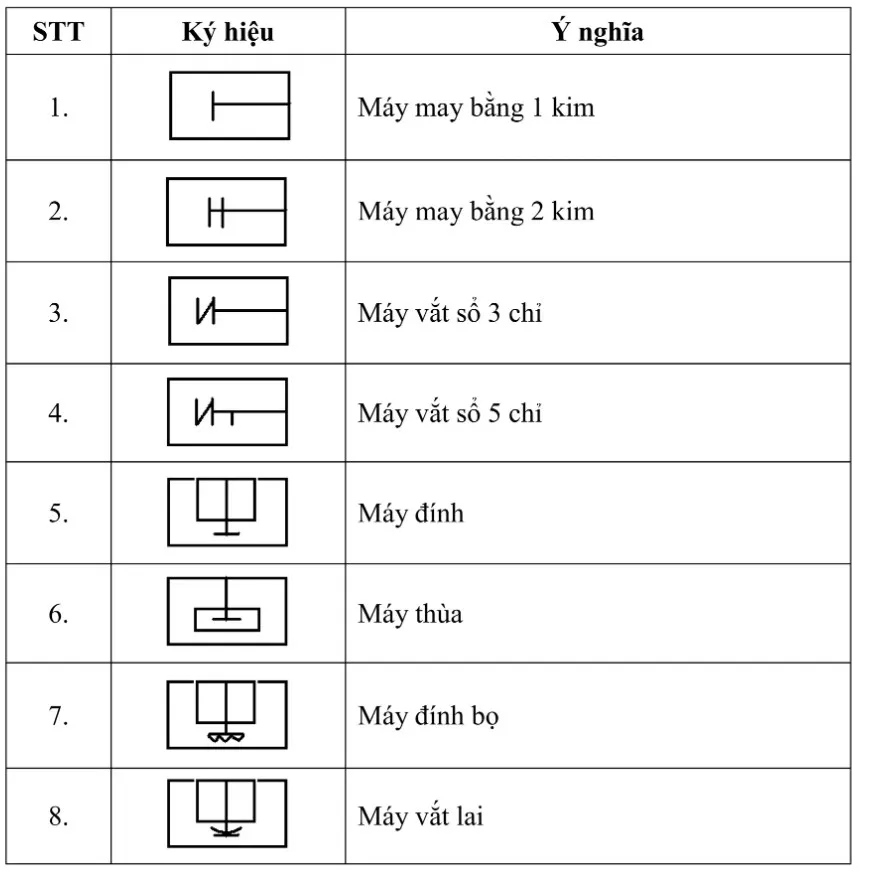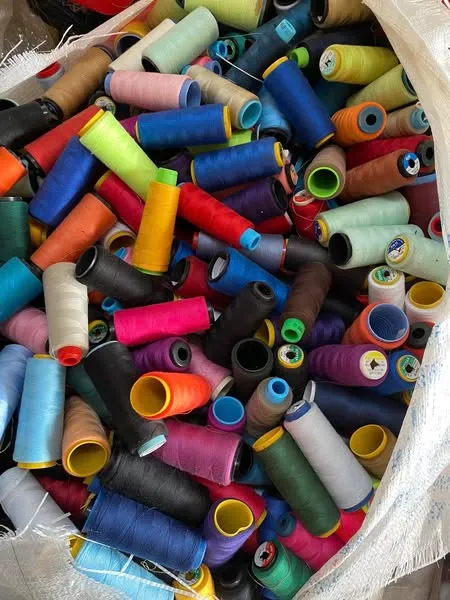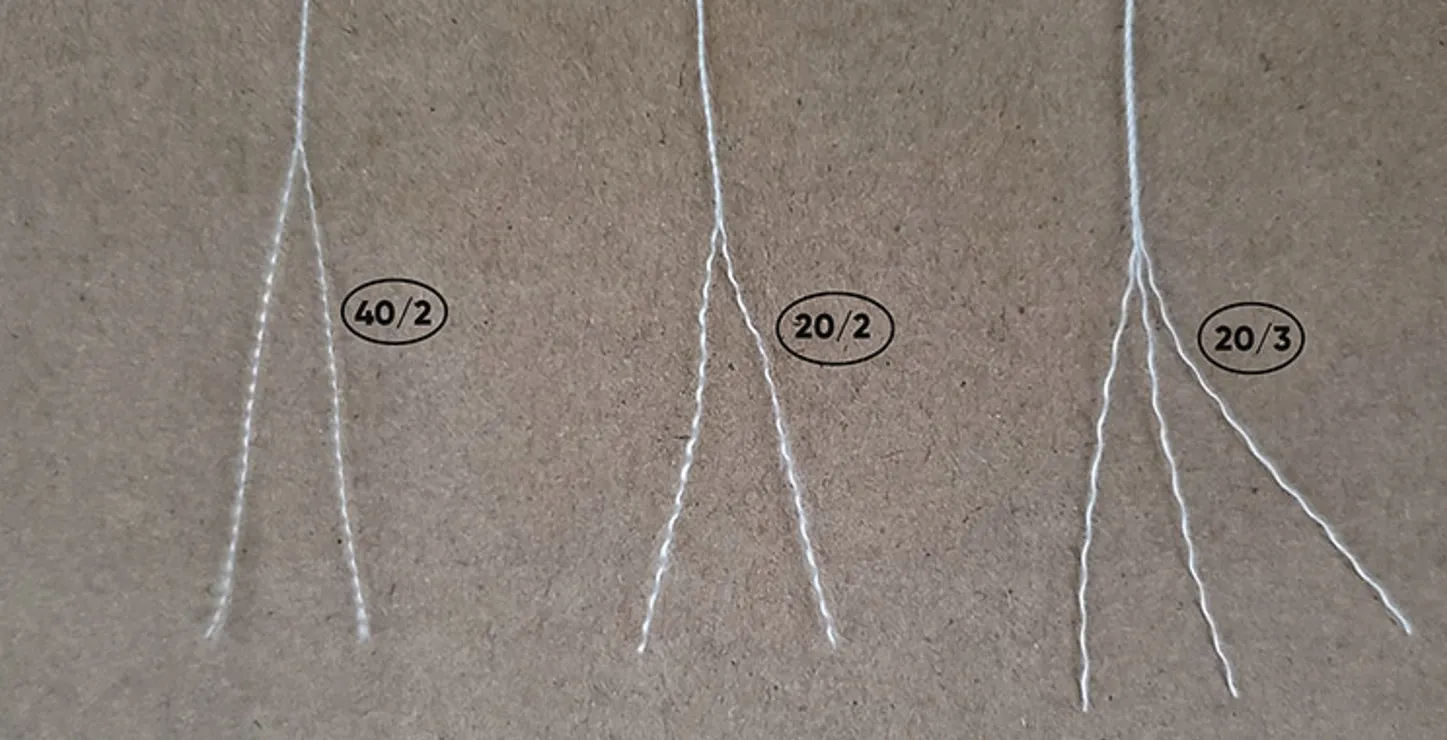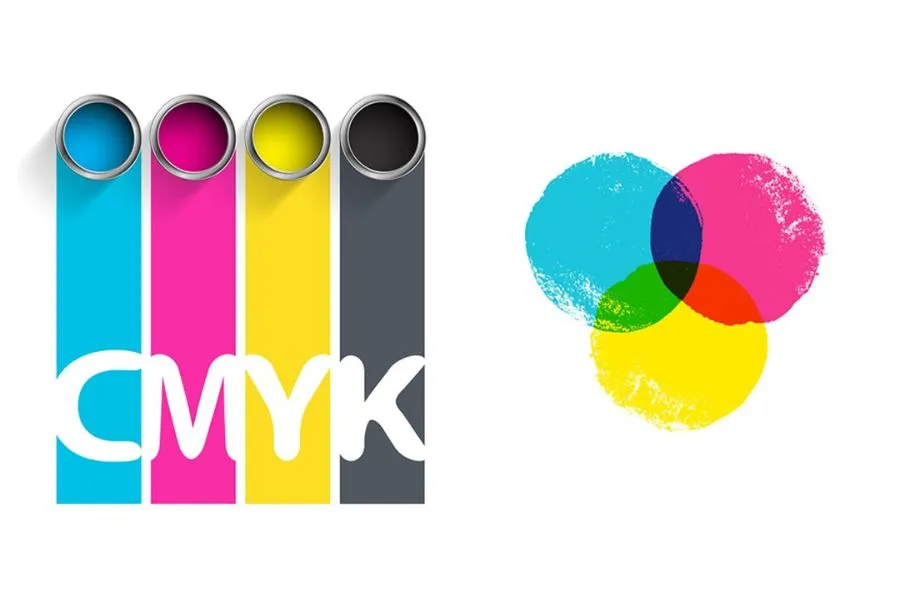
Color is more than just a visual element in fashion — it’s the soul of every garment. In the apparel industry, colors help define a brand’s personality, shape customer perception, and spark emotional connections. Whether it’s a vibrant red that conveys energy, or a calm blue that reflects trust, color choices can turn simple designs into powerful statements.
To ensure consistency and creativity, fashion designers and garment factories rely on a variety of standardized color palettes. These tools — from CMYK and Pantone systems to real fabric swatches and seasonal trend charts — make it possible to control color accuracy from design to production. Understanding these palettes is essential for anyone working in fashion, helping them transform creative ideas into products that not only look beautiful but also communicate clearly across global markets.
Types of Color Palettes Commonly Used in the Garment Industry
CMYK Color Palette (Cyan – Magenta – Yellow – Black)
In printing on fabric, especially when printing patterns, logos or complex images, the CMYK color model is almost always the go-to. This is the international standard color model in printing, allowing the combination of four basic colors to create thousands of shades. This enables designers to reproduce images almost exactly when printing onto fabric.
- Application: Standard color model used in fabric printing, heat transfer printing, and digital printing.
- Role: Allows mixing of the basic colors to generate many shades, suitable for printing designs, logos, or complex images.
- Accuracy: Gives results near the original design, although test prints are necessary because printed colors on fabric may differ from those on screen.
- Note: Best suited to printing; for large-scale dyeing, other standard palettes like Pantone are often more precise.

Pantone Color Chart (Pantone Matching System – PMS)
When absolute consistency and precision are required, especially for global production, Pantone is the most widely used color system. Each Pantone color has a standard code, helping all parties in the supply chain — from designer to customer to dye house — to “speak the same color language.”
- Application: An internationally standardized system, so all parties in production use a common “color language.”
- Role: Ensures consistency of color everywhere — from Vietnam to Europe or America.
- Advantage: Has standard color codes, is easy to communicate — especially suitable for global brands that demand absolute precision.
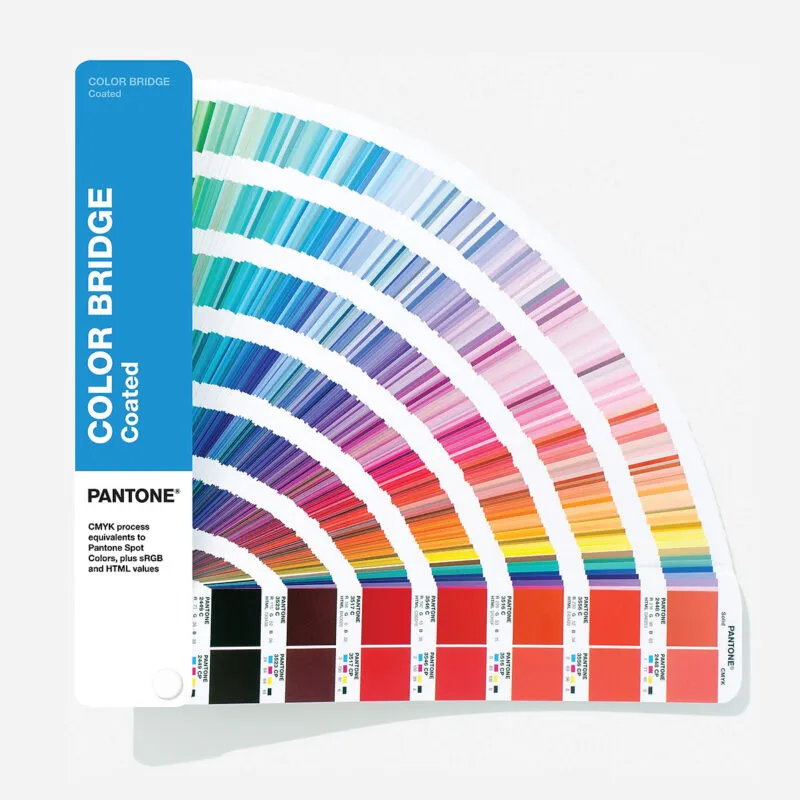
Fabric Swatch / Color Cards (Real Fabric Color Cards)
Nothing is more intuitive than seeing and touching the color on the actual fabric. Thus, fabric swatch cards — often collections of small dyed fabric pieces — are very important in color selection for uniforms, fashion items or interior fabrics. They help reduce risks of color mismatch in mass production. These cards are often produced by fabric manufacturers and sold to users.
- Characteristic: Made from actual dyed fabric, reflecting the true color on material.
- Application: Helps customers, designers, and factories choose accurate colors for garments.
- Advantage: Minimizes risks of color deviation in mass production orders, especially with uniforms or large orders.
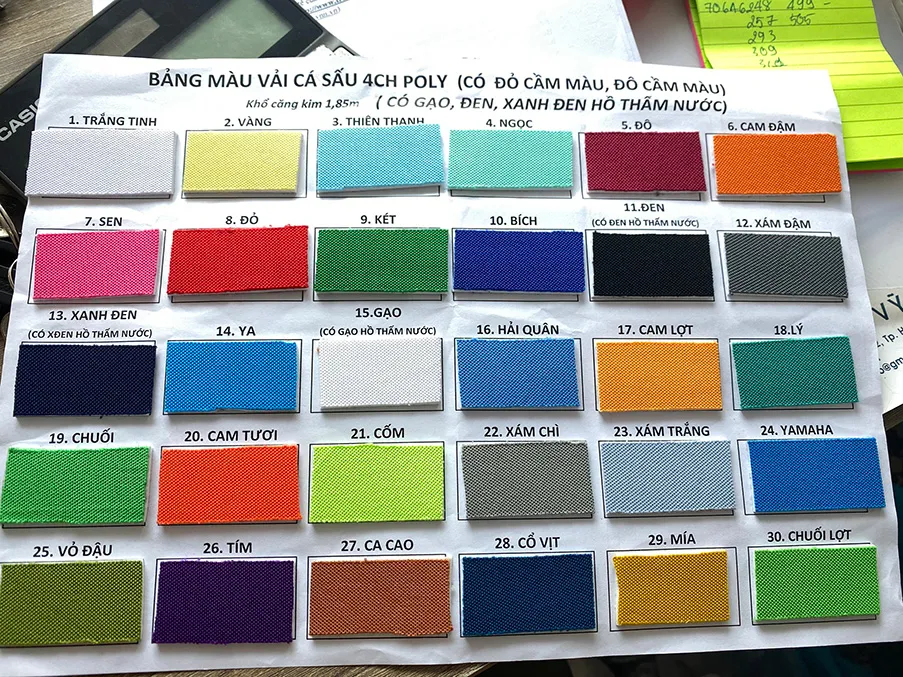
Color Palettes Based on Meaning and Color Psychology
Colors aren’t just aesthetic elements — they are “emotional languages” in fashion. Choosing colors based on their symbolic meaning allows garments to convey brand personality or evoke customer emotions. That’s why many designers pay attention to color psychology when creating samples.
-
Purpose: Use colors to express brand traits or evoke emotions in the wearer.
Examples of symbolic meanings of colors:
| Color | Meaning / Impression |
|---|---|
| Red | Passionate, strong, dynamic |
| Black | Elegant, powerful, mysterious |
| White | Pure, pristine |
| Purple | Loyalty, devotion, creativity |
| Pink | Gentle, cute, feminine |
| Blue | Trust, calmness |
| Yellow | Optimism, positive energy |
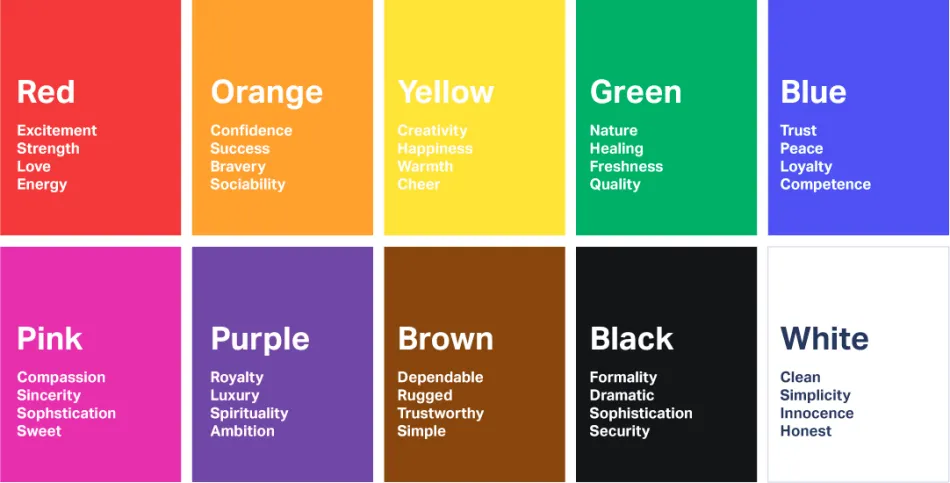
Trend Color Palettes
In the fashion industry, colors always change with the seasons and years. Trend color palettes published by trusted organizations (like Pantone, WGSN) help brands quickly catch consumer tastes and deliver collections that match current preferences. This is also a way for collections to stand out and align with trends.
- Sources: Published by Pantone Color Institute, WGSN, Fashion Snoops, etc.
- Application: Helps brands catch “in-vogue” colors for each season or year.
- Example: Pantone often announces a “Color of the Year,” which is widely used in fashion, interior design, and cosmetics.
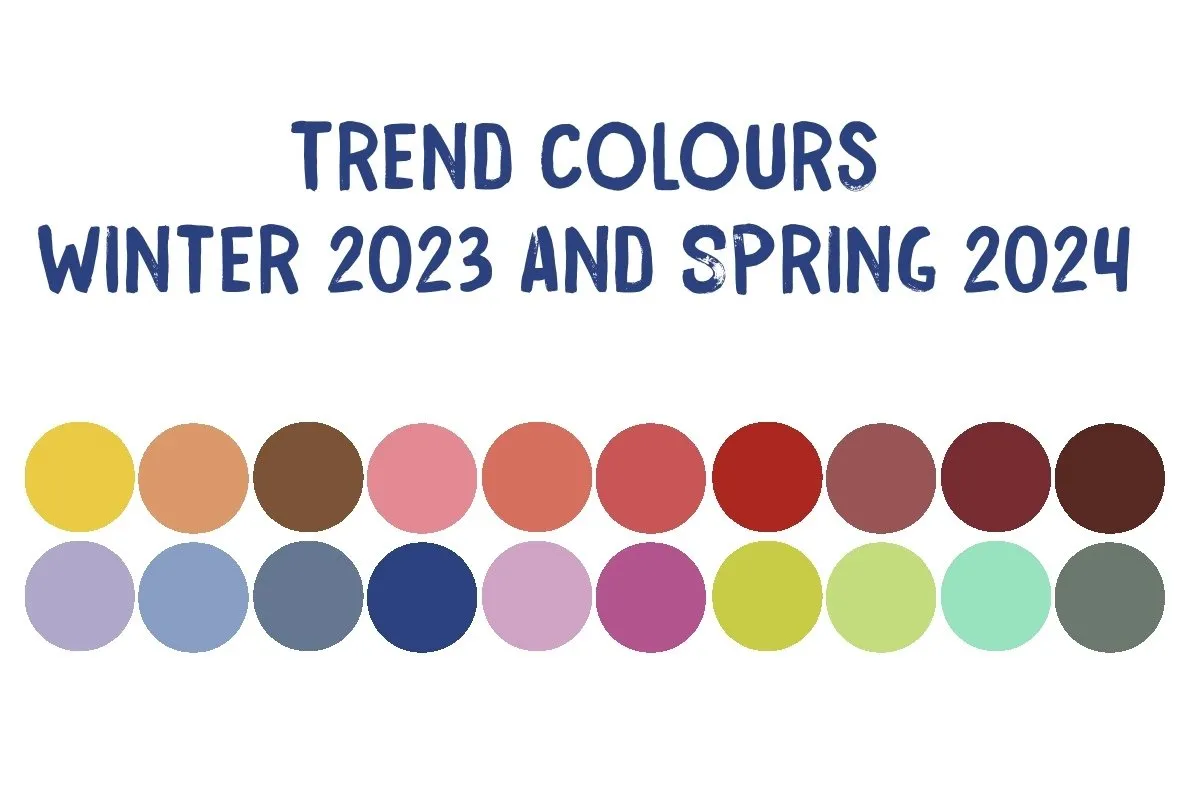
Conclusion
Color in the garment industry is not just an aesthetic factor but also a key strategy that influences production techniques, market trends, and brand image. Each type of color palette — from CMYK, Pantone, real fabric swatches, to symbolic and trend palettes — plays its own role, supporting efficient design and production.
Applying the right palette helps garments achieve high accuracy, clearly convey messages, and ensure professional consistency. Meanwhile, keeping up with color trends helps businesses match consumer tastes and boost competitiveness. The combination of technique, aesthetics, and symbolic meaning makes color palettes an indispensable tool in the garment industry.
